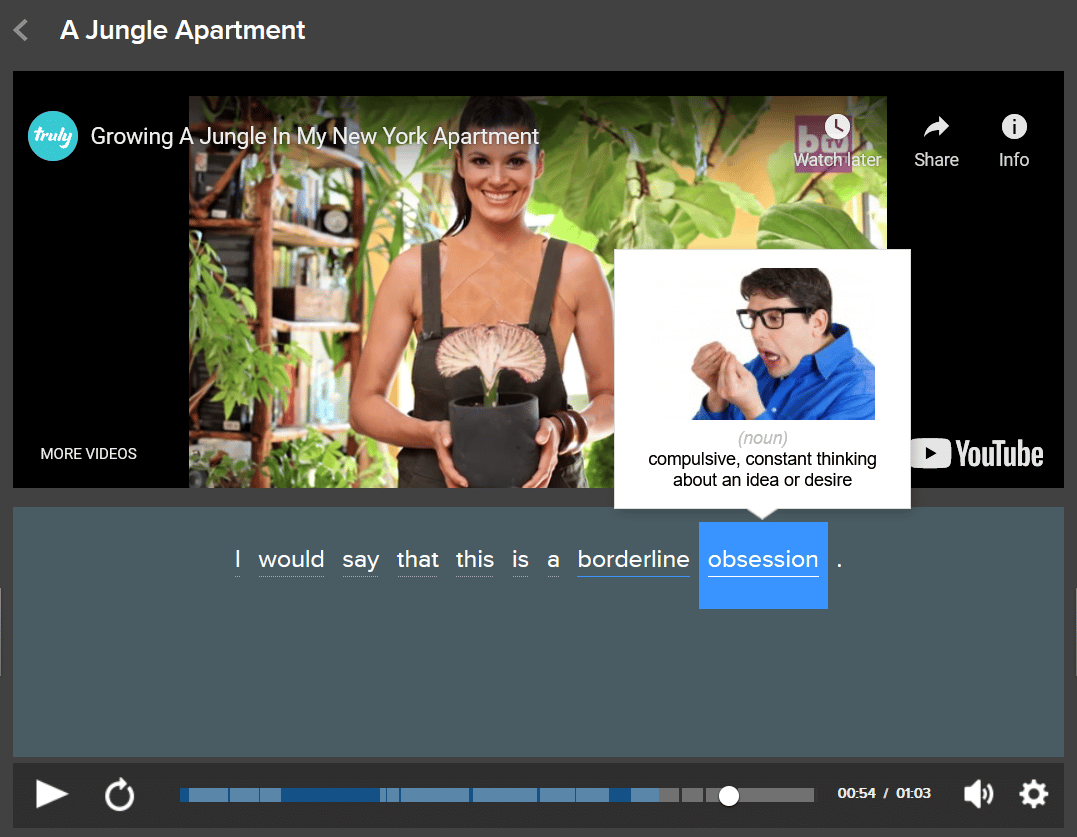
10 Steps to Beginner ESL Lesson Plans That Get Your Students Off the Ground
English has practically become a universal language.
Literally millions of people are studying it.
That means new beginner ESL students are joining the ranks every day.
Creating lessons plans for beginner ESL students may seem like an overwhelming task. However, it can be done. If you follow these 10 steps, it can actually be a totally pain-free process.
Download: This blog post is available as a convenient and portable PDF that you can take anywhere. Click here to get a copy. (Download)
10 Steps to Creating Beginner ESL Lesson Plans
1. Identify Your Students
Are you teaching children or adults? Teenagers won’t take well to learning nursery rhymes and adults may need to study business English, even if they’re just starting to study the language. It’s exceedingly important to have a clear focus on the needs of your target audience, because you’ll need to consider these needs while developing your own ESL lesson plans.
Teaching ESL to Children
With children, use all sorts of games and activities. According to the British Council, young children are natural language acquirers. All they really need is to see that English class is fun!
Another interesting point identified by the British Counsel is that boy’s and girl’s brains process language learning differently. Girls tend to be somewhat more adept at picking up new languages, so mixed-gender classes may result in having multi-level classes. Being aware of this developmental process will make you more aware of why certain students may need additional time to progress.
Teaching ESL to Teenagers
Teenagers are right in the sweet spot between childhood and adulthood. They may need to go back and learn some basics, or they might be years into their English language learning.
They’ll mostly need material and resources that are relatable and engaging, like pop music and technology. Don’t go easy on them—keep them challenged during class time.
Teaching ESL to Adults
When it comes to teaching adults, get them talking about themselves and asking questions with other students.
In many business situations, they’ll need to be conversational and to have a vocabulary related to their field. So if you’re working with engineers, incorporate relevant terms—including jargon, if required—into your lesson plans. It may sound difficult, but oftentimes the words will be Latin-based and will sound similar to the words in your students’ native language.
When beginning adult students start to recognize technical terms, it’ll encourage them to feel more comfortable with language learning.
2. Develop a Plan
The big picture question you have to ask yourself before you start planning lessons for beginning students is: What do you want them to be able to do by the end of the class? This might include what they’ll be able to understand, say, read or write.
Remember that they’re beginners, so you’ll have to keep things in line with their newbie perspective. Another question is: What are the skills they need to reach their language goals? By having the answers thought through you can work backwards and divide the whole lesson into key components.
Brainstorming is essential to get the creative process started. Jot down notes to yourself or open a Word file to keep track of your ideas. Some ESL teachers may want to create a multi-colored mind-map.
Another approach is to talk with other ESL teachers about their planning strategies. Even if your school or college has a curriculum, you’ll still want to personalize it for the students you will be teaching.
3. Create interactive classes
Make it your goal to get the students doing most of the talking. Absolutely nothing is more boring than a teacher droning on and people—no matter what age they are—tuning out after about five minutes.
This is most easily done in a one-on-one tutoring session, as you can just keep asking questions and directing the conversation. In classes, have students work together or interview each other and then present reports to the class.
Use technology to encourage interaction. Watch a YouTube piece to give students a discussion topic. There are 58,906 clips specifically for beginner ESL students, so the most difficult part of the task is deciding which one to use. Again, it all goes back to the age and interests of the students you’re working with.
While YouTube is a great place to start, you’ll have to vet the clips for accuracy. You may also want to provide your students with a transcript of the video you decide to watch, which can be time-consuming for you.
Another program that can help overcome these issues is FluentU. Thanks to the large authentic content library, you’ll be able to find appropriate and interactive content for all levels of learners. FluentU has accurate, expert-checked subtitles so you can be sure they’re correct.
FluentU also has transcripts for each video—you can download and print these out, or let students access them through the program or app to take advantage of the interactive elements: Hover over any word for a quick definition or click on it to pull up a more in-depth flashcard.
Students can also check the definition of any word in the subtitles as the video plays, without needing to leave the video. And since translations are contextual, they’ll be seeing the correct meaning for the context in which the word appears.
You can use FluentU in the classroom, and answer the quizzes that follow each video together, or you can assign videos or vocabulary lists as homework and let the program customize the questions for each individual student’s needs.
Students can use FluentU in their browser of choice, or download the iOS or Android apps.
4. Include all four language components
Young children will start off with speaking. This comes most naturally to them.
With older students and adults, though, the general trend is that the first skill they’ll learn is to read in a new language. Next they’ll be able to listen and understand. Television, radio, DVDs, computer programs and music come in at this point.
The next step for adults is that they’ll start to speak. In some cultures, students of all ages are horrified about making mistakes and will be reluctant to talk. If you can convince them that making mistakes is acceptable, you’ll have accomplished a major step towards making them willing to speak and interact.
Writing in another language is often the most difficult skill for students to develop. Unless students become totally bilingual, chances are that they’ll never totally master the skill of writing. But that doesn’t mean that you shouldn’t encourage them and that they shouldn’t try.
One way to help students develop their writing skills is to have them keep journals or diaries. The translation sites on the Internet may not be perfect, but they’re getting better all the time. And they’re certainly much faster than using a dictionary.
5. Develop a vocabulary book
Again, this requires some planning in advance.
Developing vocabulary books will depend on the situation. With one-on-one adult tutorials it’s a straightforward exercise. With young children it’s best done as a class activity so that everyone is, literally, on the same page.
With beginner students about 12 or older, you’ll find that they may want to develop personal vocabulary books to reflect their personal interests.
Do you want your students to write down each new word as they learn it or do you want them to separate new words into categories? Do you want them to use cellphones, tablets or notebooks to record words? While paper may be outdated in some contexts, it can still reinforce the written word.
6. Start with the pronouns
English is a pronoun based language: I, me, you, he, she, it, us, them.
With children you can use flashcards with pictures. Older students and adults will have written materials before, so the focus is getting them to memorize the words. Pick key topics for fluid conversation. For example, you could help them to create a pronoun chart.
Another essential set of words are the 5-Ws: who, when, where, when and why. Again, create a chart and get them using the words regularly.
7. Introduce the most important verbs
The Oxford English Dictionary has identified the most frequently used verbs. Beginning students can start working with common verbs like be, have, do, say, get, make, go, know, take and see. The problem with verbs in most languages—and English is no exception—is conjugation. This is where you link the verbs back to the pronouns.
8. Pick out the most important nouns or objects
Different students will have some nouns or objects that are most important to them. Again, this goes back to your big picture planning.
Developing noun clusters is one way to start. Categories such as food, sports, clothes and holidays fit nicely into this approach. Link it back to the vocabulary book and make sure everything is recorded so that students can review it all later.
9. Speak in sentences
As soon as beginning students understand the very basics, move towards speaking in simple sentences. Knowing things in isolation is of little value when it comes to understanding English. Memorizing the names of all the colors is a waste of time if students don’t use the words in full sentences.
“I see the book” may sound very elementary—which it is—but it’s a sentence. When beginning students can start to put pronouns, verbs and objects to real use, they’re closer to being able to move up to the intermediate level.
10. Begin each class with a review
Rather then launching into new material, take the time to review the material that was covered in the last lesson. With children it might be getting them to identify the names of food from photos. With adults it could involve asking them about what they learned in the last lesson.
The review is also a way to evaluate how much your beginner students are understanding. If they can’t remember words or sentences you may need to slow down. On the other hand, if they can rattle off everything from the last lesson, you may have to pick up the pace so that they don’t get bored.
Repeat, repeat, repeat. This is the way babies learn to talk and it doesn’t differ all that much as we get older. That’s where the concept of getting students speaking from the beginning comes into play. With older students, all this is effectively reinforced with vocabulary books and diaries.
So take a deep breath, follow the 10 steps and create some innovative ESL lessons for your students!
Download: This blog post is available as a convenient and portable PDF that you can take anywhere. Click here to get a copy. (Download)



